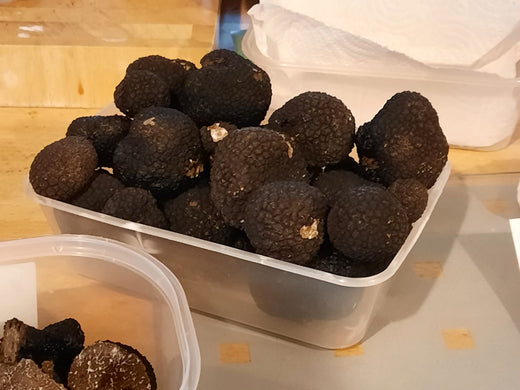
Ireland's Newest Agricultural Frontier
In the rolling hills and lush landscapes of Ireland, a quiet revolution is taking place beneath the soil. Traditionally known for its rich agricultural heritage—think cattle, sheep, and dairy—Ireland is now turning its attention to a more niche, luxurious crop: truffles.
An Unexpected Agricultural Landscape
While truffles are often associated with the Mediterranean, the emergence of truffle farming in Ireland showcases the adaptability of this country's agricultural sector and its ability to embrace innovative ventures. This burgeoning industry is putting Irish-grown truffles on the culinary map, creating exciting opportunities for farmers, food enthusiasts, and fine-dining establishments alike.
The Science Behind Indigenous Irish Truffles
Ireland's cool, temperate climate and fertile soil make it an unexpected yet promising candidate for truffle cultivation. Truffles, the fruiting bodies of certain fungi, grow symbiotically with the roots of host trees like hazelnut and oak. These trees thrive in Ireland's conditions, provided the soil is well-drained and slightly alkaline.
In recent years, advancements in mycorrhizal inoculation—the process of pairing tree roots with truffle spores—have allowed farmers to establish truffle orchards even in non-native regions. With proper care and patience (truffles can take 5–10 years to mature), Irish farmers are now seeing the fruits of their labor.
A Sustainable Luxury Crop
Truffle farming aligns with Ireland's growing emphasis on sustainable agriculture. By planting truffle orchards, farmers not only cultivate a high-value crop but also contribute to biodiversity, as these orchards create habitats for birds, insects, and other wildlife. The long-term nature of truffle cultivation also encourages a shift from intensive farming to more ecological land management practices.
Moreover, truffles themselves are a sustainable luxury. Unlike imported truffles, which can have a significant carbon footprint, Irish truffles reduce the need for long-haul transportation. This appeals to eco-conscious consumers and chefs who prioritize local, seasonal ingredients.
Pioneering Producers
A small but dedicated group of Irish truffle farmers is paving the way for this emerging industry. Brands like Hare Tree Truffles are championing the growth of locally sourced truffles, offering a product that is as unique as the Irish terroir itself. By fostering collaborations with chefs and wholesalers, these producers are ensuring that Irish truffles find their place in high-end restaurants and gourmet markets both locally and internationally.
While the industry is still in its infancy, the potential is immense. As word spreads about the quality and flavor of Irish truffles, demand is expected to grow, fueling further innovation and investment.
From Soil to Table
The journey of Irish truffles from soil to table is one of patience, passion, and precision. Each truffle is carefully unearthed, with the help of trained truffle dogs, and handled with the utmost care to preserve its delicate aroma. These truffles then find their way into the hands of chefs who transform them into culinary masterpieces, adding a touch of Irish magic to risottos, pastas, and other gourmet dishes.
A New Culinary Identity
As Ireland ventures into truffle cultivation, it's redefining its place in the global culinary landscape. Just as Irish butter and beef are renowned worldwide, Irish truffles have the potential to become a symbol of premium quality and natural excellence.
This emerging industry is more than just an agricultural experiment; it's a testament to the ingenuity and resilience of Irish farmers. By tapping into the ancient allure of truffles, Ireland is not only diversifying its agricultural output but also enriching its culinary heritage.
The Future of Irish Truffles
In the years to come, the earthy, nutty aroma of Irish truffles may well become a hallmark of the country's gastronomic identity. And for those lucky enough to experience this homegrown delicacy, it's a reminder that Ireland's bounty extends far beyond its green pastures—right down into the roots of its soil.
